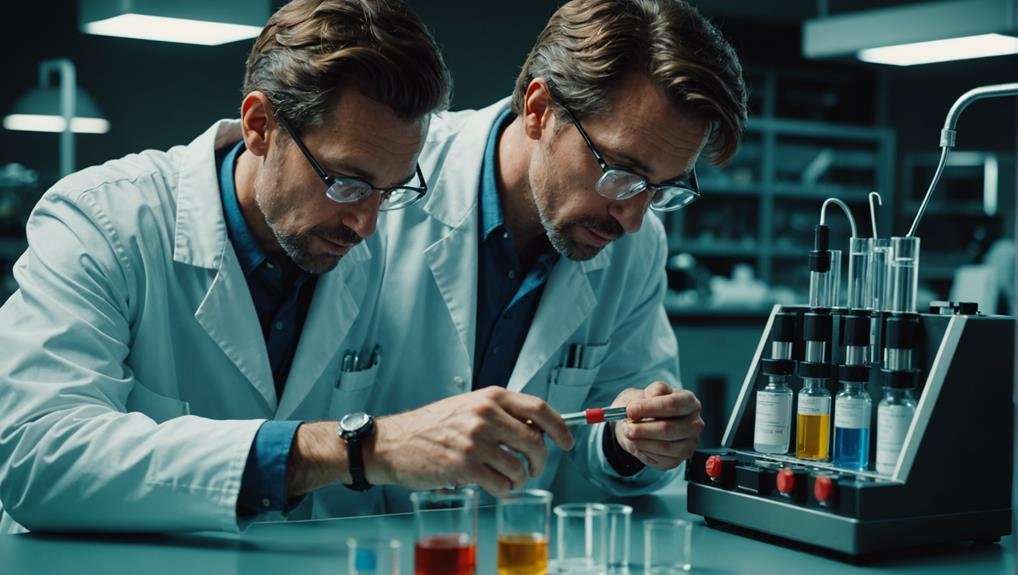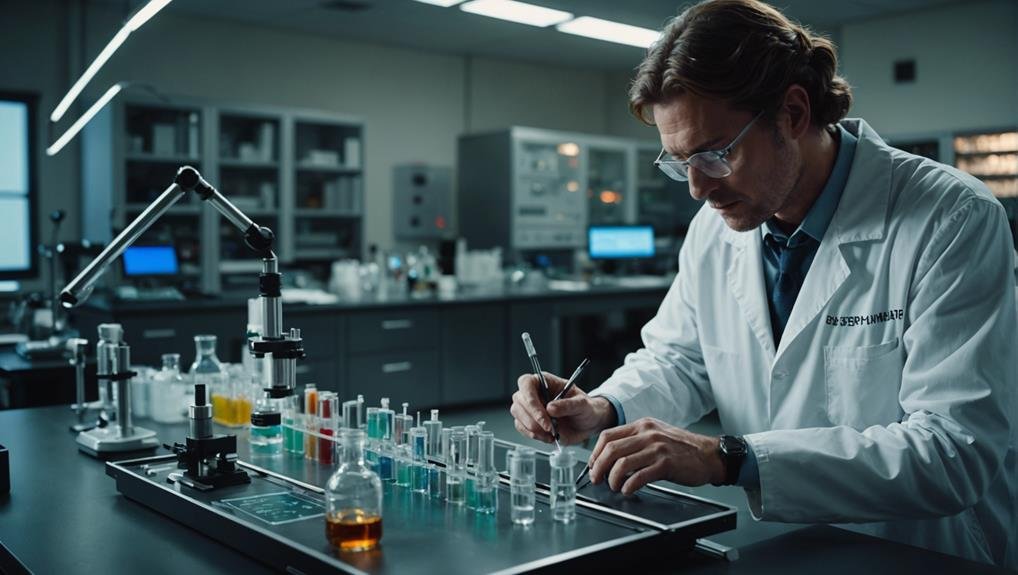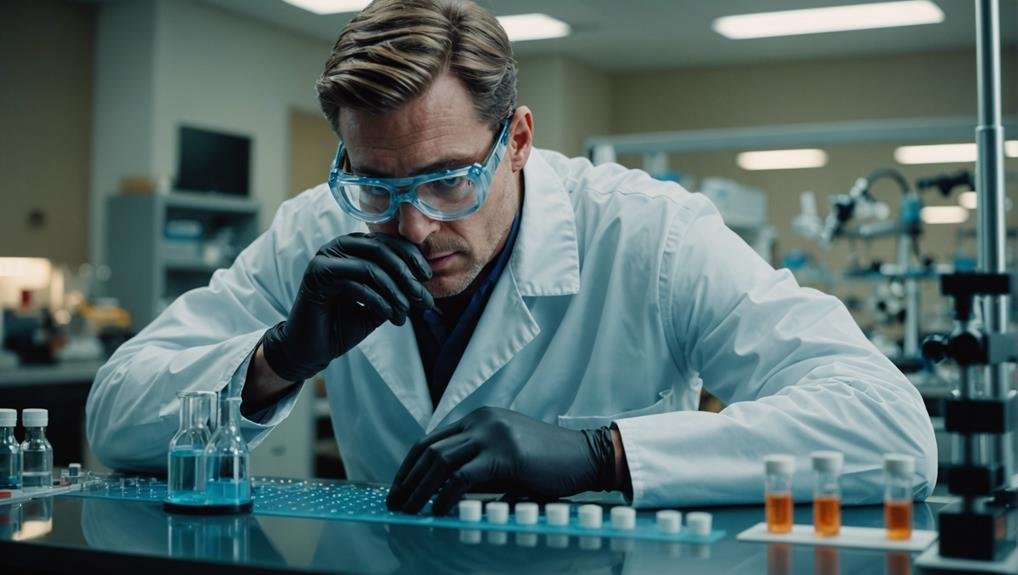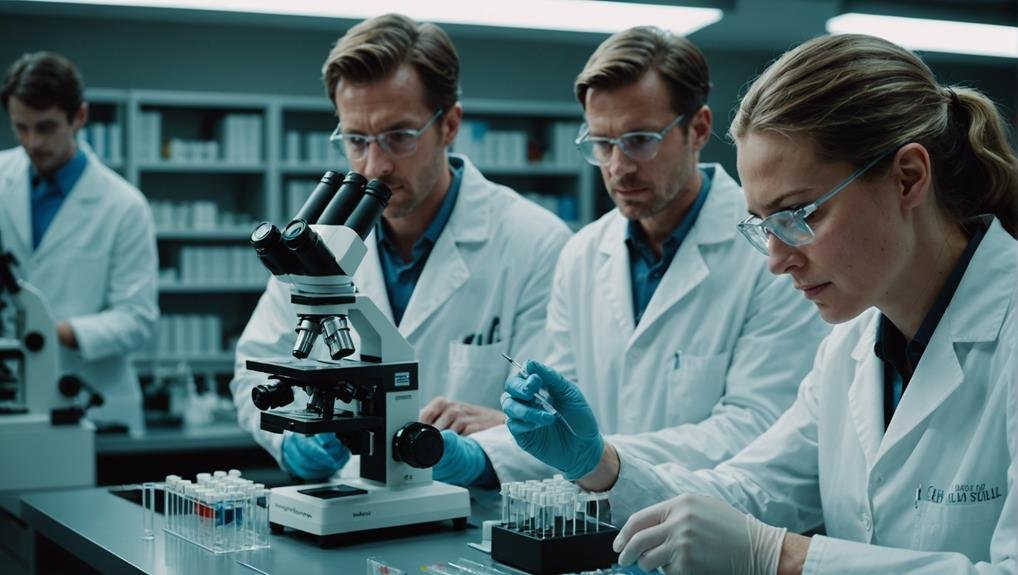Ensuring precise water quality testing entails following specific protocols diligently. It is essential to gather samples from the center of the pool, steering clear of surface areas and return lines, using clean plastic bottles for collection.
Some of the links in this article may be affiliate links. If you make a purchase through these links, we may earn a small commission at no extra cost to you. Thank you.
The accuracy of results hinges on routinely calibrated equipment that adheres to manufacturer guidelines. Continuous staff training and supervision are crucial to ensure adherence to protocols. Incorporating quality control measures such as analyzing duplicate samples and conducting proficiency tests bolsters reliability.
Regular equipment maintenance through checks and cleaning is imperative. The utilization of automated systems can decrease human error and enhance consistency in testing procedures.
For more comprehensive insights on maintaining testing accuracy, stay tuned for further details.
Proper Sample Collection
Proper sample collection plays a crucial role in ensuring accurate water quality test results. Following correct sampling techniques is essential to prevent contamination and obtain reliable data.
When collecting samples, it's important to draw water from the middle of the pool to ensure a representative sample. Avoiding sampling from the surface or near return lines is necessary, as it can lead to skewed results.
Using clean plastic bottles is a key factor in avoiding contamination during sample collection. Fill the bottles carefully, minimizing air bubbles, and seal them tightly to prevent errors in water testing results.
Sampling from the midpoint between the shallow and deep ends of the pool is also important for capturing a balanced water composition and obtaining an accurate assessment of overall water quality. Remember, these steps are crucial for reliable water quality analysis and maintaining a healthy pool environment.
Staff Training and Supervision
To ensure accurate water quality test results, it's crucial to provide thorough staff training and supervision beyond just proper sample collection. Ongoing staff training is essential to ensure that testing equipment is handled correctly and that testing protocols are strictly followed. Through comprehensive training programs, our team stays informed about the latest techniques and technologies in water quality testing.
Supervision by experienced professionals is key to maintaining accuracy. They can quickly identify and rectify any errors in testing procedures, thereby preventing common mistakes that could compromise the results. Continuous monitoring of staff performance helps in promptly addressing any deviations from standard protocols.
Continuous training is vital for error prevention. By keeping our staff up-to-date through ongoing education, we can adapt to new advancements and refine our methods for improved accuracy.
Three critical elements to focus on include:
- Regular training programs to update staff on new protocols and techniques.
- Oversight by experienced professionals to catch and correct errors.
- Continuous performance reviews to ensure adherence to protocols.
Equipment Calibration

Keeping our equipment calibrated is crucial to ensure accurate and reliable water quality test results. Equipment calibration involves adjusting instruments to a known standard to minimize errors in measurements. Neglecting proper calibration can lead to skewed readings, compromising the validity of our test data. It's essential to follow calibration intervals and manufacturer guidelines to maintain the precision and integrity of our testing equipment.
Adhering to recommended calibration intervals helps uphold the accuracy of our water testing instruments. Each instrument requires specific attention to ensure effectiveness, and following manufacturer guidelines is key to performing calibration correctly. This adherence is a fundamental aspect of quality control in water testing.
Accurate readings are essential, and skipping or improperly conducting calibration can put our results at risk. Regular calibration sessions should be incorporated into our routine to maintain data quality and prolong the lifespan of our instruments.
Equipment calibration is a necessary step to guarantee the accuracy and reliability of our water quality tests. By prioritizing this practice, we uphold the highest standards in our work.
Regular Maintenance
Regular maintenance is crucial for ensuring that our water quality testing equipment functions optimally. Neglecting proper maintenance can lead to errors in testing, which may compromise the accuracy of our results. Consistency and reliability in testing are vital, and maintenance practices play a key role in achieving this.
To maintain accurate water quality testing, we need to focus on three main maintenance practices. Firstly, scheduled maintenance involves regular checks either based on specific dates or equipment usage. By adhering to a maintenance schedule, we can prevent breakdowns and address potential issues proactively.
Secondly, regular cleaning and timely replacement of parts are essential for preserving the integrity of the equipment. These practices help prevent errors and ensure that the equipment operates efficiently.
Lastly, evaluating service contracts for their cost and coverage is important. A good service contract can help ensure testing accuracy, minimize downtime, and provide necessary preventive maintenance and support.
Quality Control Measures

To ensure precise water quality testing, it's crucial to implement strict quality control measures. Proper sampling techniques play a vital role in minimizing errors. Taking multiple samples from the same location helps control random errors and ensures the reliability of our results.
Following testing instructions diligently is also essential for effective quality control.
Regular calibration of testing instruments is a must. Failing to calibrate our instruments regularly can compromise the accuracy of our water testing, resulting in unreliable data. Calibration maintains the precision of our instruments and guarantees the correctness of our measurements.
Incorporating zero samples as controls is a valuable practice to detect any contaminations that could affect the accuracy of our testing. These zero samples act as a baseline, enabling us to identify any deviations in our test results.
Implementing parallel measurements, where we conduct the same test multiple times, aids in monitoring consistency and flagging any discrepancies or potential issues in the testing process.
Clean and Organized Workspace
Maintaining a clean and well-organized workspace plays a crucial role in minimizing the risks of contamination during water quality testing. By reducing clutter and ensuring proper storage of equipment, we can significantly decrease the likelihood of errors in water analysis. An organized approach not only helps in preventing contamination but also preserves the accuracy of our samples.
To achieve this, it's important to follow these key practices:
- Clearly Label Containers and Samples: Labeling containers and samples with precision is essential to avoid mix-ups and accurately track the source of each sample. This step is crucial for ensuring the accuracy of test results and preventing errors.
- Securely Seal Reagent Containers: Always make sure to tightly seal reagent containers when not in use to prevent contamination and maintain the quality of chemicals. Simple yet crucial actions like keeping containers closed can safeguard the integrity of test results.
- Regularly Clean Work Surfaces and Equipment: Consistent cleaning of work surfaces and equipment is vital to prevent cross-contamination and uphold the precision of tests. By using suitable cleaning agents and following cleaning instructions diligently, reliable results can be achieved.
Adherence to Protocols

To ensure the most precise water quality testing results, strict adherence to established protocols is essential. Following these protocols is crucial as they ensure that the water samples accurately reflect the quality being analyzed. It's vital to avoid letting samples sit exposed to contaminants or using unclean test vials, as each step in the process significantly impacts the final results.
Begin by carefully reading the testing instructions to ensure that the most up-to-date methods are being followed. Using the correct product numbers to match the guidelines is crucial for accurate testing procedures. This practice guarantees that the most current protocols are being implemented.
To prevent contamination of the solution, it's important to maintain cleanliness by washing hands, utilizing gloves, and keeping the workspace tidy. It's essential to keep reagents and samples separate until the testing moment to avoid any potential contamination issues.
Calibrating equipment, such as pH meters, as directed by the manufacturer is another critical step. Regular calibration according to the manufacturer's instructions is necessary to maintain the accuracy of the equipment and ensure reliable results.
Adhering to protocols is non-negotiable when it comes to water quality testing. Every detail, from maintaining precise sample volumes to correctly mixing reagents, plays a significant role in the accuracy of the results obtained. By following guidelines and preventing contamination, errors can be minimized, leading to dependable water quality analysis outcomes.
Automated Systems Usage
Incorporating automated systems into water quality testing processes is crucial for ensuring accuracy and efficiency. These systems play a key role in reducing human error and minimizing the risk of contamination, which often arises from manual handling.
By handling a large number of samples efficiently, automated systems guarantee consistent and precise results, enhancing the overall reliability of the data generated.
One significant advantage of using automated systems is the traceability and reliability of the data produced. This traceability is essential for maintaining high standards in water quality testing, allowing for easy verification and auditing of results. With automated systems, we can trust that our data is accurate, reducing the chances of false readings or anomalies.
Furthermore, the utilization of automated systems leads to improved laboratory efficiency and productivity. By processing more samples in less time, our team can allocate resources effectively to other critical tasks. This heightened productivity ensures that we can meet the demands of high-volume testing without compromising the quality of our work.
In summary, the benefits of incorporating automated systems in water quality testing include reduced human error and contamination risk, reliable and traceable data generation, and enhanced laboratory efficiency and productivity.
These systems are essential for maintaining the accuracy and reliability of our testing processes, ultimately contributing to the delivery of high-quality results.
Duplicate Sample Analysis

Analyzing duplicate samples is crucial for ensuring the consistency and reliability of water quality testing results. By testing two identical samples, we can identify any discrepancies or errors in the testing process, helping to maintain quality control in water testing labs.
The goal of analyzing duplicate samples is to minimize variation between the results, which confirms the accuracy and reproducibility of our water quality testing methods.
Errors in testing can stem from equipment malfunctions or human errors, making duplicate sample analysis essential for early detection and correction of issues. By comparing the results of duplicate samples, we can pinpoint areas in our testing procedures that may require improvement, enhancing the overall quality of our testing outcomes.
Quality control practices like duplicate sample analysis are essential for reliable water quality testing. Consistent results between duplicate samples not only validate our testing procedures but also boost the accuracy and credibility of our findings.
Ultimately, this approach ensures that the data we provide is dependable, safeguarding the safety and quality of the water being tested.
Proficiency Testing
Proficiency testing is essential for evaluating our lab's performance by comparing our results with other laboratories. This practice helps us identify errors, improve accuracy, and maintain high-quality testing standards. Participation in proficiency testing isn't only beneficial but is often required for accreditation and regulatory compliance.
There are three main benefits to proficiency testing. Firstly, it helps us identify errors by comparing our results with those of other labs, allowing us to promptly address any issues. Secondly, it highlights areas where improvement is needed and where additional training may be necessary to ensure our team remains proficient and knowledgeable. Lastly, regular participation enhances our lab's credibility and reliability in the industry, reassuring clients and regulatory bodies of our commitment to accuracy and high-quality standards.
Conclusion
Ensuring accurate water quality testing is crucial for reliable results. It's akin to maintaining a smoothly operating machine.
The key factors to focus on include proper sample collection, thorough staff training, and precise equipment calibration. Regular maintenance, strict adherence to protocols, and the implementation of quality control measures are essential to avoid costly errors.
Utilizing automated systems, conducting duplicate sample analysis, and engaging in proficiency testing can further enhance the accuracy of our processes.
By staying vigilant and committed to these practices, we can consistently deliver trustworthy outcomes.

